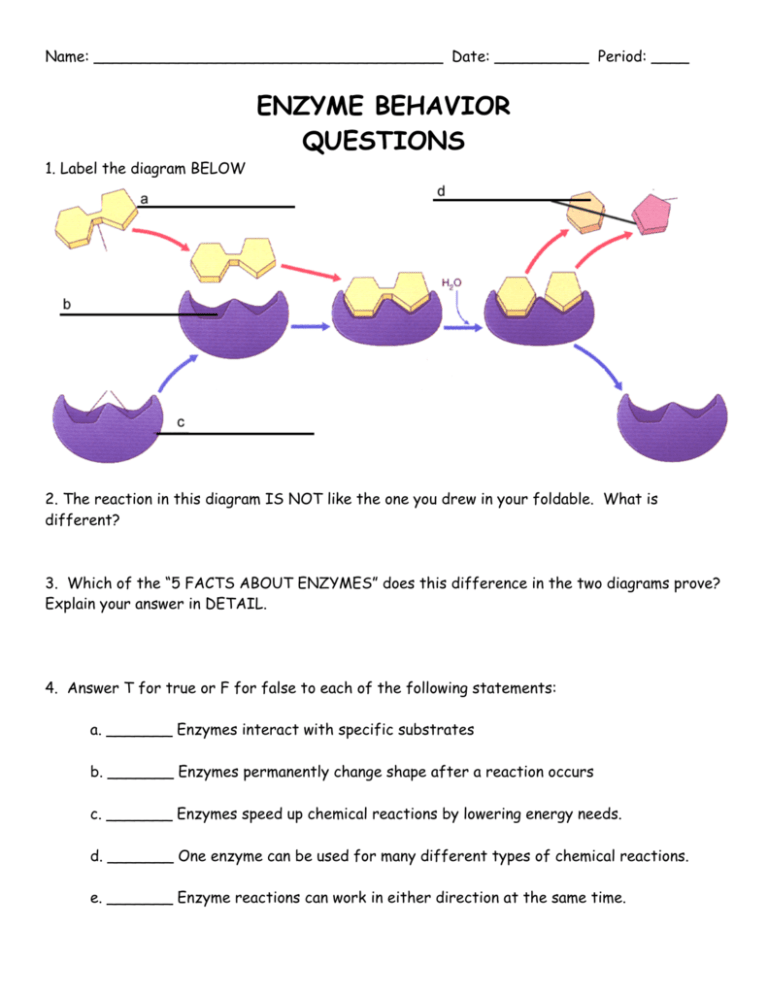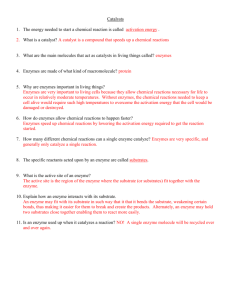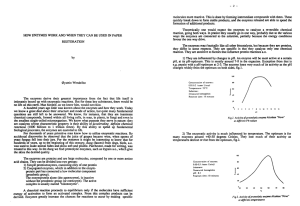ENZYME BEHAVIOR QUESTIONS
advertisement

Name: _____________________________________ Date: __________ Period: ____ 1. Label the diagram BELOW ENZYME BEHAVIOR QUESTIONS 2. The reaction in this diagram IS NOT like the one you drew in your foldable. What is different? 3. Which of the “5 FACTS ABOUT ENZYMES” does this difference in the two diagrams prove? Explain your answer in DETAIL. 4. Answer T for true or F for false to each of the following statements: a. _______ Enzymes interact with specific substrates b. _______ Enzymes permanently change shape after a reaction occurs c. _______ Enzymes speed up chemical reactions by lowering energy needs. d. _______ One enzyme can be used for many different types of chemical reactions. e. _______ Enzyme reactions can work in either direction at the same time. 5. Circle the correct effect for an enzyme reaction. a. Raising the temperature of an enzyme reaction slightly to make it a bit warmer will: [ increase | decrease | not change ] the rate of the reaction. b. Raising the temperature of an enzyme reaction to boiling [212 degrees F] will: [ increase | decrease | not change ] the rate of the reaction. c. Changing the pH of the solution around an enzyme reaction toward the optimal pH will: [ increase | decrease | not change ] the rate of the reaction. d. Introducing another chemical into the reaction called a “competitive inhibitor” will: [ increase | decrease | not change ] the rate of the reaction. 6. Place a check mark next to the things below that you would expect to INCREASE the rate of an enzyme reaction: a. Add more enzyme d. Add a non competitive inhibitor b. Add more substrate e. Freezing c. Adjust pH to optimal level e. Adding Acid 7. SHORT ANSWER: a. Are enzymes reusable or NOT reusable? WHY? b. Are enzymes specific or NOT specific? WHY? c. What effect do enzymes have on chemical reactions? d. What effect do enzymes have on the activation energy of a reaction? e. What is the activation energy of a reaction?








